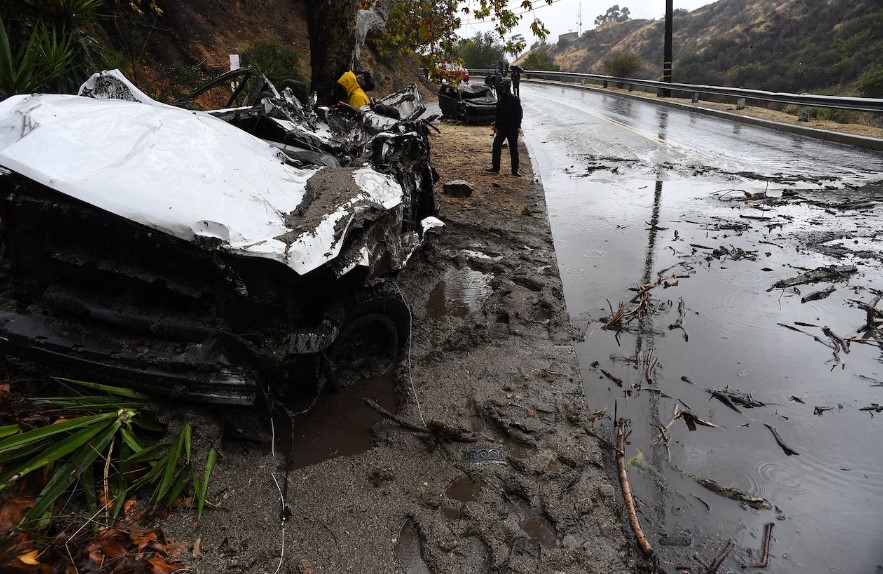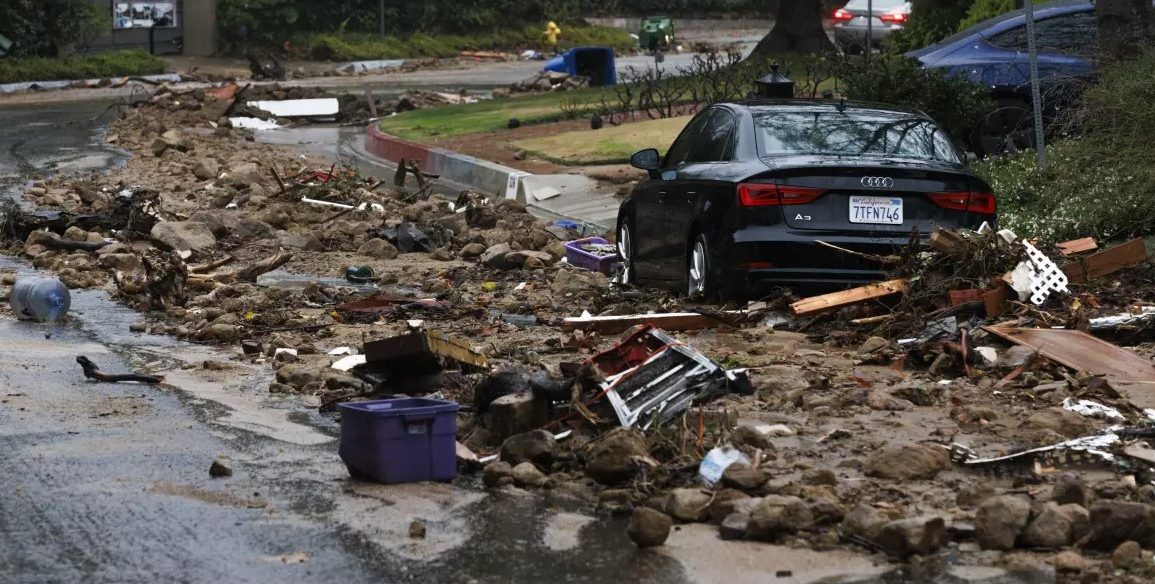The recent powerful atmospheric river brought unprecedented rainfall to California, causing nearly 400 mudslides and significant damage across the state. By Tuesday, while the storm had begun to subside, the risk of flooding and landslides persisted.
The storm, which swept across southern California, resulted in severe destruction from violent winds and heavy rain. Trees were toppled, homes were damaged, and vehicles were buried in mud. The storm led to at least three fatalities from falling trees.
On Monday, the storm stalled over southern California, delivering a historic rainfall to Los Angeles. Downtown received 2.93 inches (7.44 cm) of rain, breaking a record set in 1901. The National Weather Service (NWS) reported over 10 inches (25 cm) of rain in the area since Sunday, with more expected. Los Angeles Mayor Karen Bass described the storm as “historic” with “unprecedented rain.”

The University of California, Los Angeles (UCLA) recorded nearly a foot of rain in just 24 hours. NWS meteorologist Ariel Cohen stated it was among the top three wettest storms since record-keeping began in the 1870s.
On Tuesday, southern California experienced scattered showers and possible thunderstorms, but there remained a threat of brief, intense downpours. Authorities maintained flood watches, warning of the increased risk of drowning and the need for swift water rescues.
Firefighters responded to numerous incidents, rescuing people from flooded roads and rivers. The storm initially hit northern California, where it killed three people, before moving south. In Los Angeles, mudslides transformed streets into rivers, prompting evacuations and damage to several homes.
Preliminary damage estimates suggest the storm could have caused up to $11 billion in losses. Despite a forecasted decrease in rainfall, the ground remains saturated, raising concerns about further landslides and debris flows. Emergency shelters in Los Angeles were full, and the city was still assessing the full extent of the damage.

